Science
Mosquito season is upon us. So why are Southern California officials releasing more of them?

Jennifer Castellon shook, tapped and blew on a box to shoo out more than 1,000 mosquitoes in a quiet, upscale Inland Empire neighborhood.
The insects had a job to do, and the pest scientist wanted every last one out.
Aggressive and impactful reporting on climate change, the environment, health and science.
Their task? Find lady mosquitoes and mate.
But these were no ordinary mosquitoes. Technicians had zapped the insects, all males, with radiation in a nearby lab to make them sterile. If they achieve their amorous quest, there will be fewer baby mosquitoes than there would be if nature ran its course. That means fewer mouths to feed — mouths that thirst for human blood.
“I believe, fingers crossed, that we can drop the population size,” said Solomon Birhanie, scientific director for the West Valley Mosquito and Vector Control District, which released the mosquitoes in several San Bernardino County neighborhoods this month.
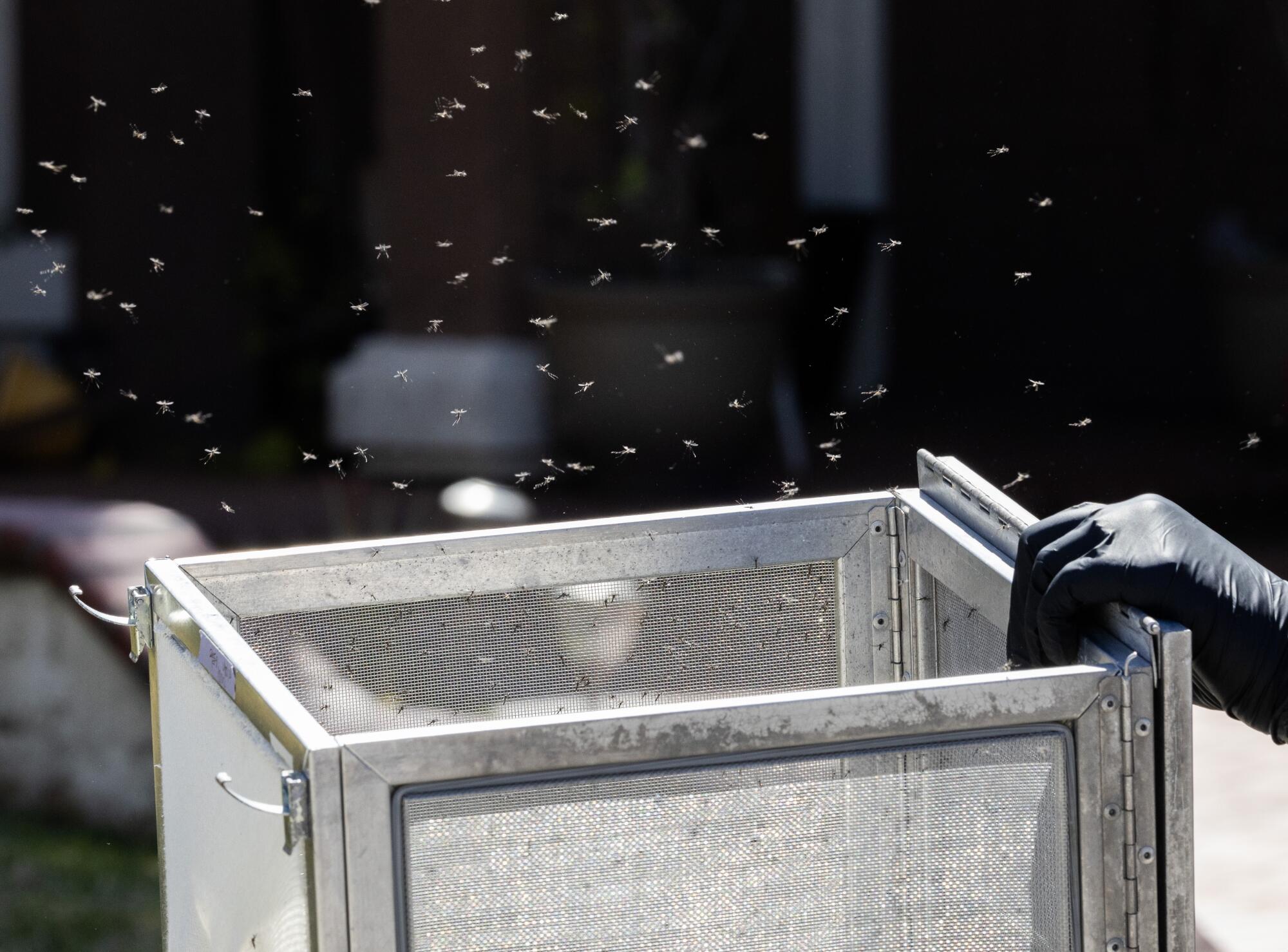
Sterilized male Aedes mosquitoes are released from a box in Rancho Cucamonga.
(Myung J. Chun / Los Angeles Times)
Controlling mosquitoes with mosquitoes
Mosquito control agencies in Southern California are desperate to tamp down an invasive mosquito — called Aedes aegypti — that has exploded in recent years. Itchy, unhappy residents are demanding it. And the mosquitoes known for fierce ankle biting aren’t just putting a damper on outdoor hangouts — they also spread disease.
The low-flying, day-biting mosquitoes can lay eggs in tiny water sources. A bottle cap is fair game. And they might lay a few, say, in a plant tray and others, perhaps, in a drain. Tackling the invaders isn’t easy when it can be hard to even locate all the reproduction spots. So public health agencies increasingly are trying to use the insects’ own biology against them by releasing sterilized males.
The West Valley district, which covers six cities in San Bernardino County, rolled out the first program of this kind in California last year. Now they’re expanding it. Next month, a vector district covering a large swath of Los Angeles County will launch its own pilot, followed by Orange County in the near future. Other districts are considering using the sterile insect technique, as the method is known, or watching early adopters closely.
On the plus side, it’s an approach that doesn’t rely on pesticides, which mosquitoes become resistant to, but it requires significant resources and triggers conspiracy theories.
“People are complaining that they can’t go into their backyard or barbecue in the summer,” Birhanie said at his Ontario lab. “So we needed something to strengthen our Aedes control.” Of particular concern is the Aedes aegypti, which love to bite people — often multiple times in rapid succession.
Releasing sterilized male insects to combat pests is a proven scientific technique, but using it to control invasive mosquitoes is relatively new.
Vector control experts often point to the success of a decades-long effort in California to fight Mediterranean fruit flies by dropping enormous quantities of sterile males from small planes. That program, run by the U.S. Department of Agriculture and the California Department of Food and Agriculture, costs about $16 million a year. That’s nearly four times West Valley’s annual budget.
So rather than try to tackle every nook and cranny of the district, encompassing roughly 650,000 residents, West Valley decided to use a more targeted approach. If a problem area reaches a certain threshold — over 50 mosquitoes counted in an overnight trap — it becomes a candidate.
1
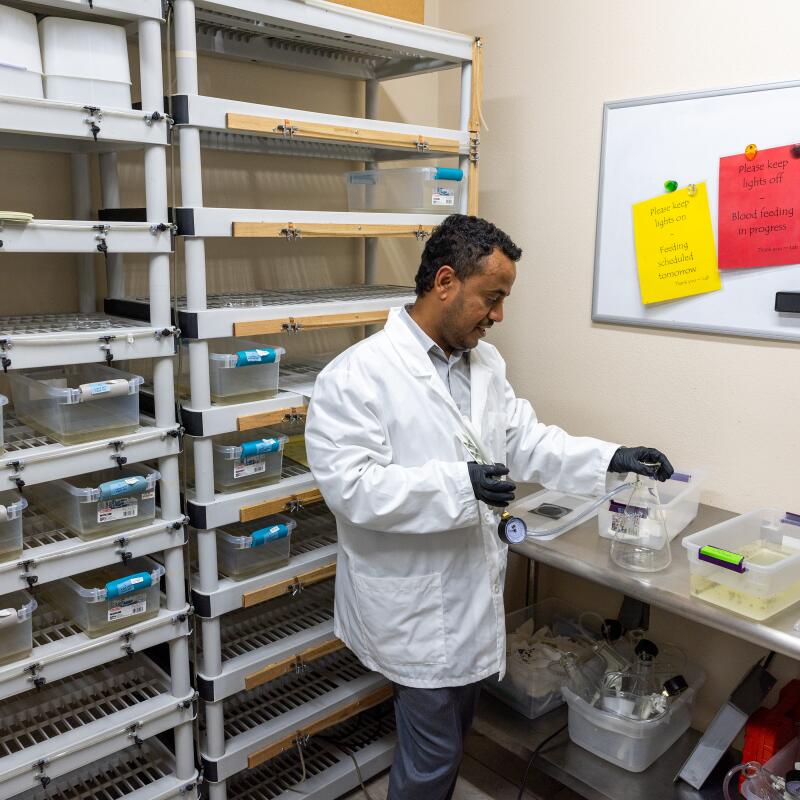
2
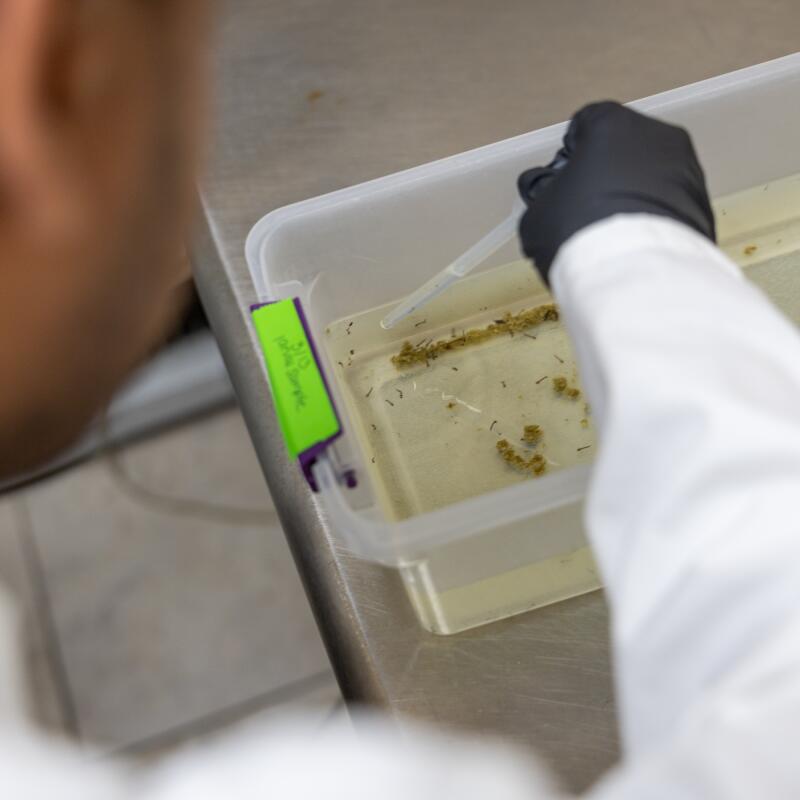
3
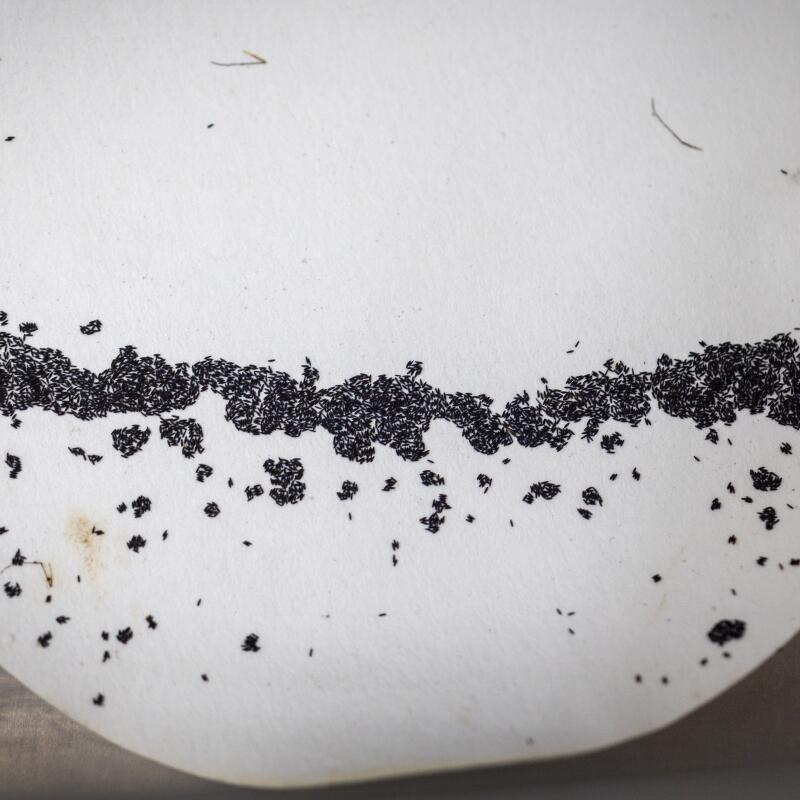
4
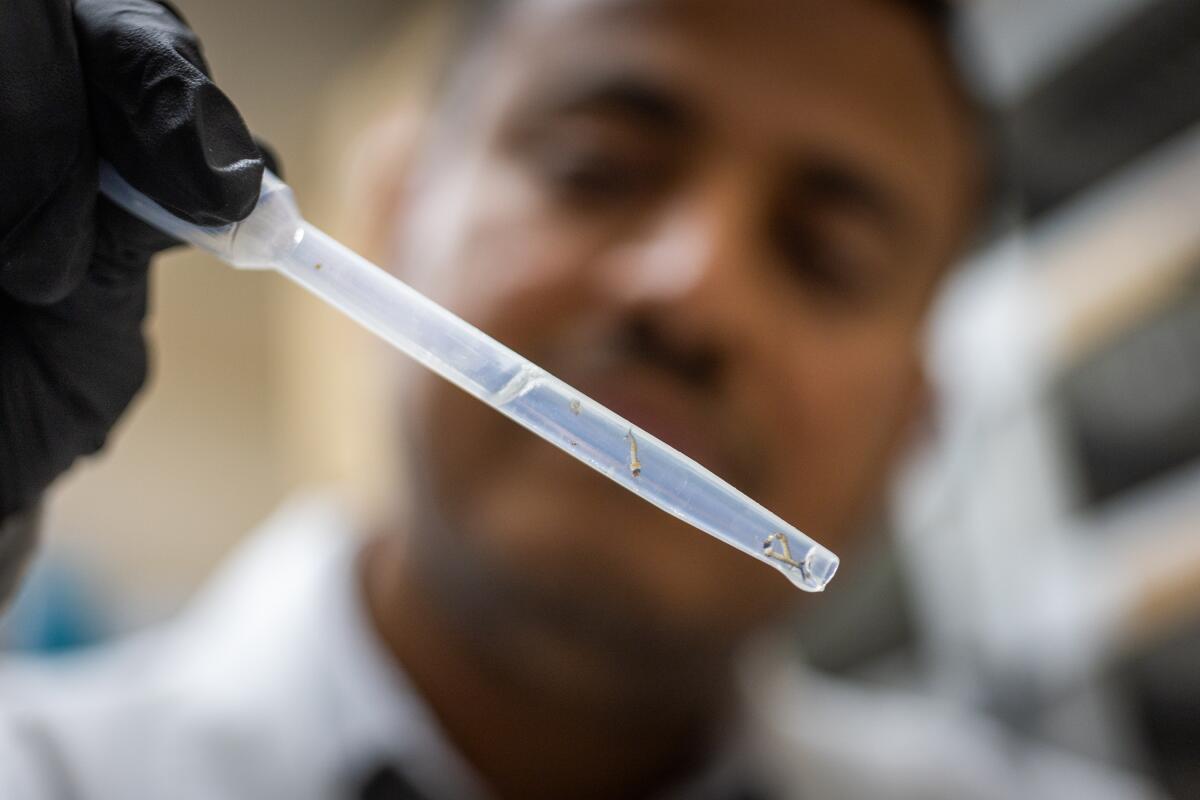
5
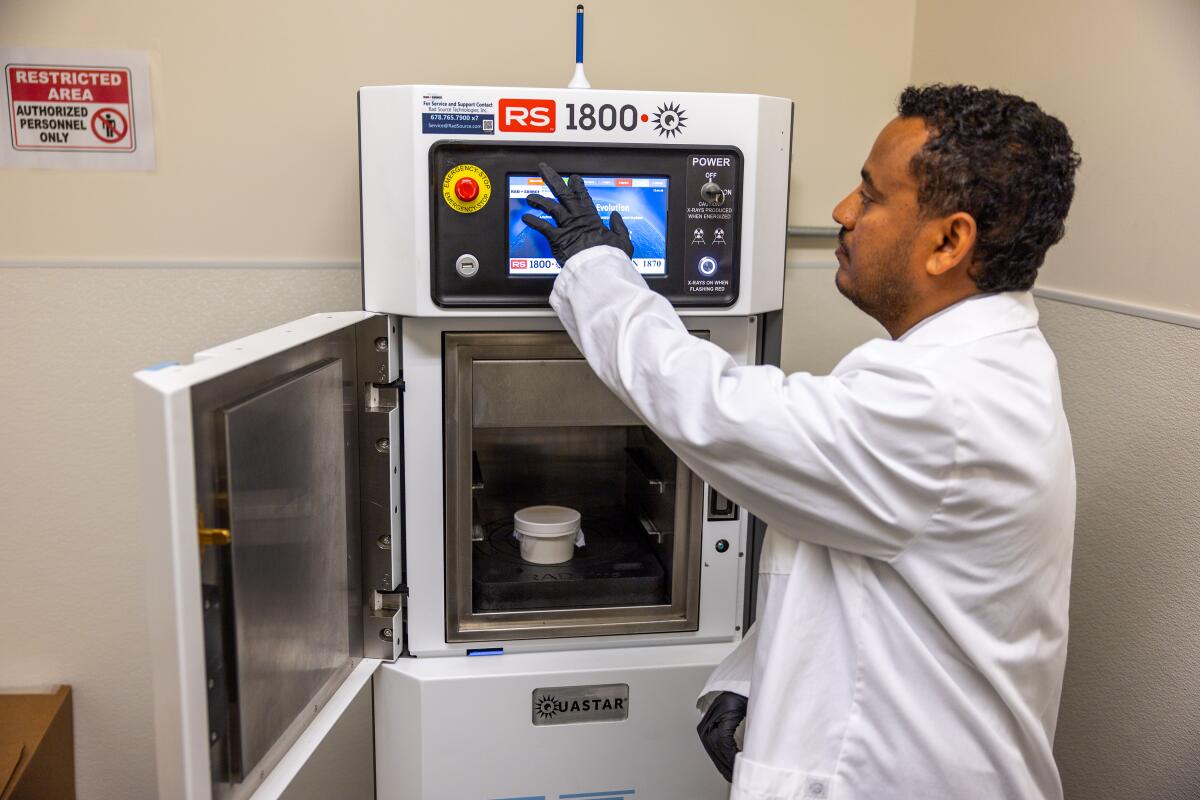
1. Solomon Birhanie inspects a container of mosquito larvae in the lab at the West Valley Mosquito and Vector Control District in Ontario. 2. Birhanie and his team raise mosquitoes in the lab, separating them by sex, because only the males, which don’t bite humans, will eventually be released. 3. Mosquito eggs in the West Valley lab. 4. The lab can grow about 10,000 mosquitoes at a time. 5. Before the male mosquitoes are released, an X-ray machine sterilizes them. If the zapped males mate with a female, her eggs won’t hatch. (Allen J. Schaben / Los Angeles Times)
And it’s still a big lift. About 10,000 mosquitoes are reared at a time at West Valley’s facility, about half of which will be males. The males are separated out, packed into cups and placed into an X-ray machine that looks like a small refrigerator. The sterilizing process isn’t that different from microwaving a frozen dinner. Zap them on a particular setting for four to five minutes and they’re good to go.
Equipment purchased for the program costs roughly $200,000, said Brian Reisinger, spokesperson for the district. He said it was too early to pin down a cost estimate for the program, which is expanding.
Some districts serving more people are going bigger.
The Greater Los Angeles County Vector Control District plans to unleash up to 60,000 mosquitoes a week in two neighborhoods in Sunland-Tujunga from mid-May through November.
With the sterile-insect program, “the biggest hurdle we’re up against really is scalability,” said Susanne Kluh, general manager of the L.A. County district, which is responsible for nearly 6 million residents across 36 cities.
In part to save money, Kluh’s district has partnered with the Orange County Mosquito and Vector Control District. They’re sharing equipment and collaborating on studies, but L.A. County’s releases will move forward first, said Brian Brannon, spokesperson for the O.C. district. Orange County expects to release its “ankle biter fighters,” as Brannon called them, in Mission Viejo this fall or next spring.
So far, the L.A. County district has shelled out about $255,000 for its pilot, while O.C. has spent around $160,000. It’s a relatively small portion of their annual budgets: L.A. at nearly $25 million and O.C. at $17 million. But the area they’re targeting is modest.
Mosquito control experts tout sterilization for being environmentally friendly because it doesn’t involve spraying chemicals, and it may have a longer-lasting effectiveness than pesticides. It can also be done now. Other methods involving genetically modified mosquitoes and ones infected with bacteria are stuck in an approval process that spans federal and state agencies. One technique, involving the bacteria Wolbachia was recently approved by the Environmental Protection Agency and is now heading to the California Department of Pesticide Regulation to review, said Jeremy Wittie, general manager for the Coachella Valley Mosquito and Vector Control District.
“Using pesticides or insecticides, resistance crops up very quickly,” said Nathan Grubaugh, associate professor of epidemiology at the Yale School of Public Health.
Vector control experts hope the fact that the sterilization technique doesn’t involve genetic modification will tamp down conspiracy theories that have cropped up around mosquito releases. One erroneous claim is that a Bill Gates-backed effort to release mosquitoes was tied to malaria cases in Florida and Texas. Reputable outlets debunked the conspiracy theory, pointing out that Gates’ foundation didn’t fund the Florida project and that the type of mosquito released (Aedes) does not transmit malaria.
To get ahead of concerns, districts carrying out the releases say they’ve engaged in extensive outreach and education campaigns. Residents’ desire to rid themselves of a scourge may overcome any anxieties.
“I think if you have the choice of getting eaten alive by ankle biters or having a DayGlo male X-rayed mosquito come by looking for a female to not have babies with, you’d probably go for the latter,” Brannon said. (“DayGlo” is a riff on the fluorescent pigment product of the same name — the sterilized mosquitoes were dusted with bright colors to help identify them.)
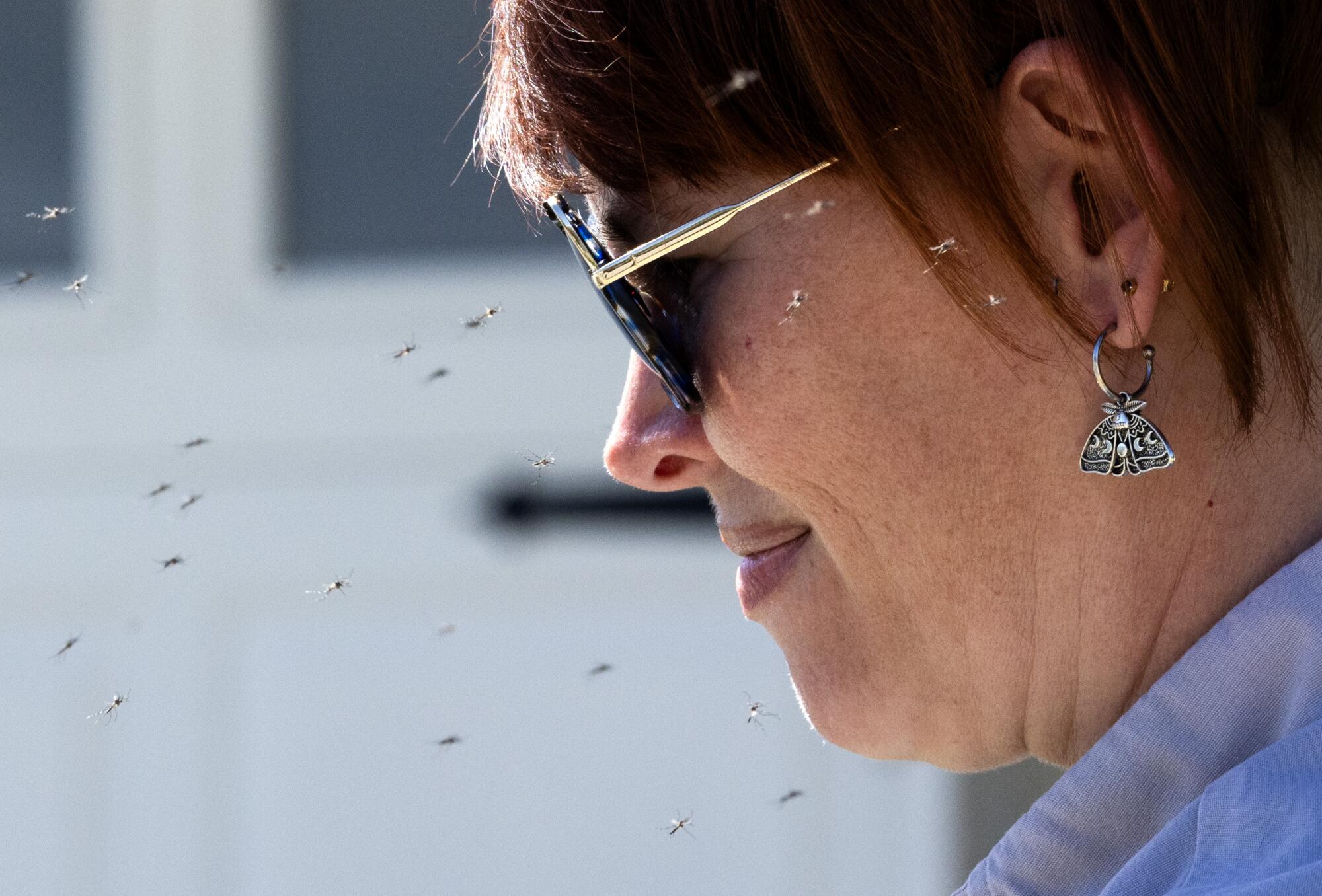
Sterilized male mosquitoes buzz around vector ecologist Jennifer Castellon as they are released in Rancho Cucamonga earlier this month.
(Myung J. Chun / Los Angeles Times)
Disease at our doorstep
As the climate warms and some regions become wetter, dengue is expanding to areas it’s never been seen before — and surging in areas where it’s established. Florida has seen alarming spikes in the viral infection in recent years, and Brazil and Puerto Rico are currently battling severe outbreaks. While most people infected with dengue have no symptoms, it can cause severe body aches and fever and, in rare cases, death. Its alias, “breakbone fever,” provides a grim glimpse into what it can feel like.
In October of last year, the city of Pasadena announced the Golden State’s first documented locally transmitted case of dengue, describing it as “extremely rare” in a news release. That same month, a second case was confirmed in Long Beach. Local transmission means the patient hadn’t traveled to a region where dengue is common; they may have been bitten by a mosquito carrying the disease in their own neighborhood.
Surging dengue abroad means there’s more opportunity for travelers to bring it home. However, Grubaugh said it doesn’t seem that California is imminently poised for a “Florida-like situation,” where there were nearly 1,000 cases in 2022, including 60 that were locally acquired. Southern California in particular lacks heavy rainfall that mosquitoes like, he said. But some vector experts believe more locally acquired cases are inevitable.
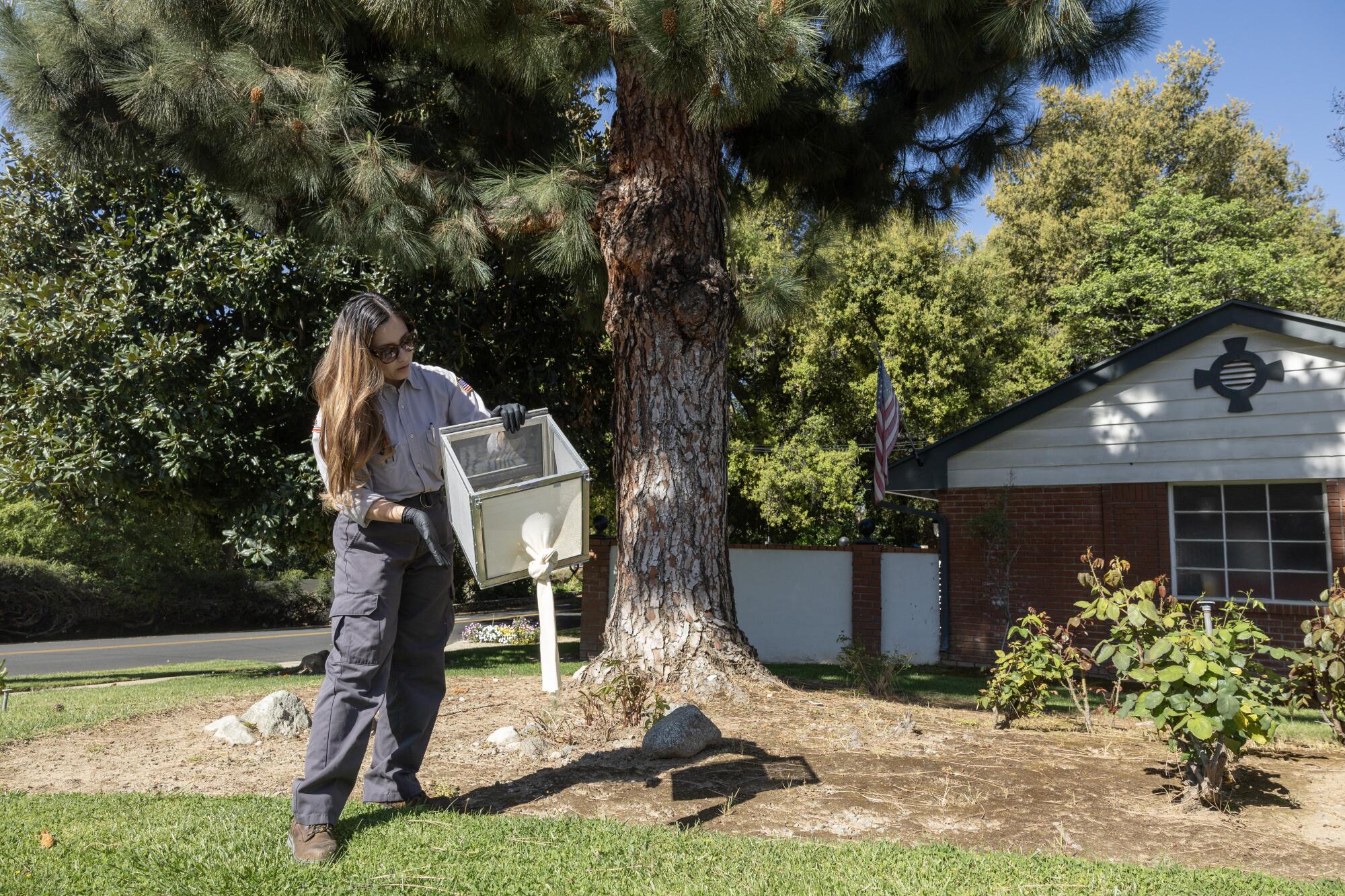
Ale Macias releases sterilized male mosquitoes in Upland this month.
(Myung J. Chun / Los Angeles Times)
Set them free
In mid-April, a caravan of staffers from the West Valley district traveled to five mosquito “hot spots” in Chino, Upland and Rancho Cucamonga — where data showed mosquito levels were particularly high — to release their first batches of sterilized male mosquitoes for the year. Peak Aedes season is months away, typically August to October in the district, and Birhanie said that’s the point. The goal is to force down the numbers to prevent an itchy tsunami later.
Males don’t bite, so the releases won’t lead to more inflamed welts. But residents might notice more insects in the air. Sterilized males released by West Valley will outnumber females in the wild by at least 100 to 1 to increase their chances of beating out unaltered males, spokeperson Reisinger said.
“They’re not going to be contributing to the biting pressure; they’re just going to be looking for love,” as Reisinger put it.
Eggs produced by a female after a romp with a sterile male don’t hatch. And female mosquitoes typically mate only once, meaning all her eggs are spoiled, so to speak. Vector experts say the process drives down the population over time.
Interestingly, the hot spots were fairly spread out across the district, indicative of the bloodsuckers’ widespread presence and adaptive nature. A picturesque foothills community in Upland was “especially interesting” because of its relatively high elevation, Birhanie said.
It was once inhabited primarily by another invasive mosquito that prefers colder, mountainous climates. Construction and deforestation in the area has literally paved the way for its humidity- and heat-loving brethren to move in.
Another neighborhood, in Rancho Cucamonga, posed a mystery. For the last two years, mosquito levels were consistently high. Door-to-door inspections, confoundingly, didn’t reveal the source.
“That’s one of the things about invasive Aedes mosquitoes — you can’t find them,” he said.
Next steps
Some vector control experts want to see a regional approach to sterile mosquito releases, similar to the state Medfly program.
Jason Farned, district manager for the San Gabriel Valley Mosquito and Vector Control District, believes a widespread effort “would be much more effective” and thinks that will come in time.
There are no talks underway to make it happen, and it’s not yet clear how it would work. Vector control agencies are set up to serve their local communities.
Fears of a bad mosquito year ahead are bubbling as the weather warms. Rain — which there was plenty of this spring — can quickly transform into real estate for mosquito reproduction.
When the swarms come, mosquito haters can take typical precautions: dump standing water and wear repellent. And they can root for the sterile males to get lucky.

Science
Video: Why Scientists Are Performing Brain Surgery on Monarchs

new video loaded: Why Scientists Are Performing Brain Surgery on Monarchs
By Alexa Robles-Gil, Leila Medina, Joey Sendaydiego and Mark Felix
December 23, 2025
Science
Video: Engineer Is First Paraplegic Person in Space

new video loaded: Engineer Is First Paraplegic Person in Space
transcript
transcript
Engineer Is First Paraplegic Person in Space
A paraplegic engineer from Germany became the first wheelchair user to rocket into space. The small craft that blasted her to the edge of space was operated by Jeff Bezos’ company Blue Origin.
-
Capsule touchdown. There’s CM 7 Sarah Knights and Jake Mills. They’re going to lift Michi down into the wheelchair, and she has completed her journey to space and back.

December 21, 2025
Science
This City’s Best Winter Show Is in Its Pitch-Dark Skies

The result is a starry sky visible even from the heart of the city. Flagstaff’s Buffalo Park, just a couple miles from downtown, measures about a 4 on the Bortle scale, which quantifies the level of light pollution. (The scale goes from 1, the darkest skies possible, to 9, similar to the light-polluted night sky of, say, New York City. To see the Milky Way, the sky must be below a 5.)
-

 Iowa1 week ago
Iowa1 week agoAddy Brown motivated to step up in Audi Crooks’ absence vs. UNI
-

 Maine1 week ago
Maine1 week agoElementary-aged student killed in school bus crash in southern Maine
-

 Maryland1 week ago
Maryland1 week agoFrigid temperatures to start the week in Maryland
-

 New Mexico7 days ago
New Mexico7 days agoFamily clarifies why they believe missing New Mexico man is dead
-

 South Dakota1 week ago
South Dakota1 week agoNature: Snow in South Dakota
-

 Detroit, MI1 week ago
Detroit, MI1 week ago‘Love being a pedo’: Metro Detroit doctor, attorney, therapist accused in web of child porn chats
-

 Health1 week ago
Health1 week ago‘Aggressive’ new flu variant sweeps globe as doctors warn of severe symptoms
-

 Maine7 days ago
Maine7 days agoFamily in Maine host food pantry for deer | Hand Off



















